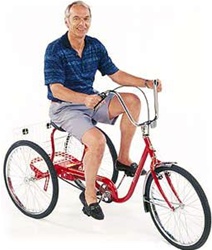salsa
Senior Member
The votes:
Motion by Mihevic to seek funding for Eglinton Crosstown bikeway carries 35-5.
Motion by Layton to fund bike plan at $25 million a year fails 16-24.
Motion by Holyday to fund 10-year bike plan at $8 million a year fails 6-34.
Motion by Holyday to consider licensing cyclists ruled out of order.
Motion by Holyday to remove all bike lanes that would have impact on traffic fails 6-34.
Motion by Robinson to reinstate Danforth corridor study carries unanimously, 40-0.
Motion by DMW to consider removable cycle tracks in the winter carries 25-15.
Motion by Shiner to extend bike lane study on Yonge from Finch to Steeles, carries 33-7.
Motion to seek federal and provincial funding for cycling infrastructure, in addition to city funding commitments, carries 28-12.
Motion to include cycling infrastructure in upcoming request for federal active transportation funding carries 32-8.
Motion to consider upgrades to bike lanes on Dundas East carries 34-6.
Amended 10-year bike plan approved 38-2. Mammoliti and Holyday against.
Motion by Mihevic to seek funding for Eglinton Crosstown bikeway carries 35-5.
Motion by Layton to fund bike plan at $25 million a year fails 16-24.
Motion by Holyday to fund 10-year bike plan at $8 million a year fails 6-34.
Motion by Holyday to consider licensing cyclists ruled out of order.
Motion by Holyday to remove all bike lanes that would have impact on traffic fails 6-34.
Motion by Robinson to reinstate Danforth corridor study carries unanimously, 40-0.
Motion by DMW to consider removable cycle tracks in the winter carries 25-15.
Motion by Shiner to extend bike lane study on Yonge from Finch to Steeles, carries 33-7.
Motion to seek federal and provincial funding for cycling infrastructure, in addition to city funding commitments, carries 28-12.
Motion to include cycling infrastructure in upcoming request for federal active transportation funding carries 32-8.
Motion to consider upgrades to bike lanes on Dundas East carries 34-6.
Amended 10-year bike plan approved 38-2. Mammoliti and Holyday against.








